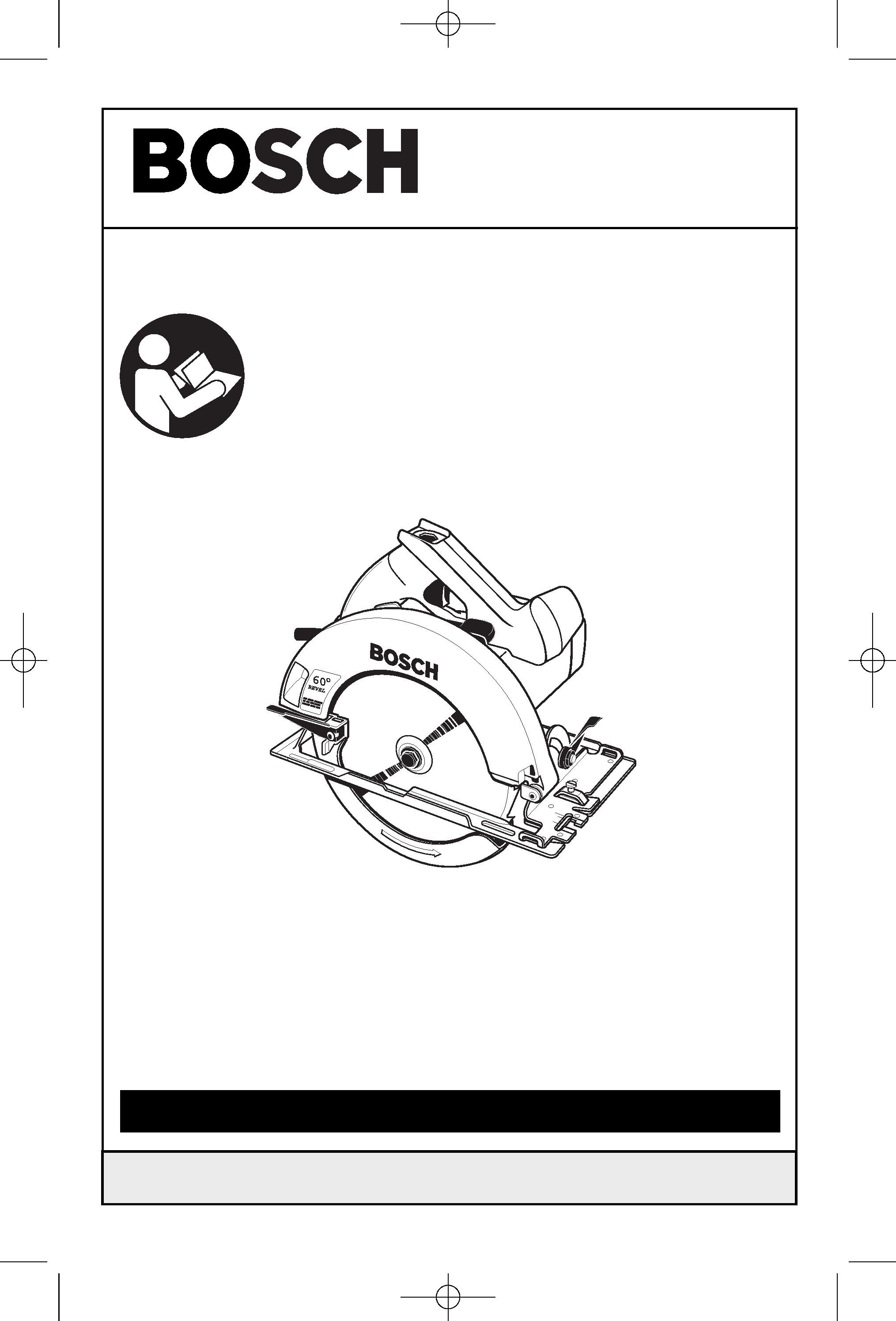
IMPORTANT:
IMPORTANT :
IMPORTANTE:
Read Before Using
Lire avant usage
Leer antes de usar
Operating/Safety Instructions
Consignes de fonctionnement/sécurité
Instrucciones de funcionamiento y seguridad
1656
For English
Parlez-vous français?
¿Habla español?
See page 2
Voir page 13
Ver página 24
1-877-BOSCH99 (1-877-267-2499) www.boschtools.com
Call Toll Free
for Consumer Information
& Service Locations
Pour renseignement des
consommateurs et centres
de service, appelez au
numéro gratuit :
Llame gratis para
obtener información
para el consumidor y
ubicaciones de servicio
!1619X00905!
BM 1619X00905 3-05
3/24/05
11:00 PM
Page 1
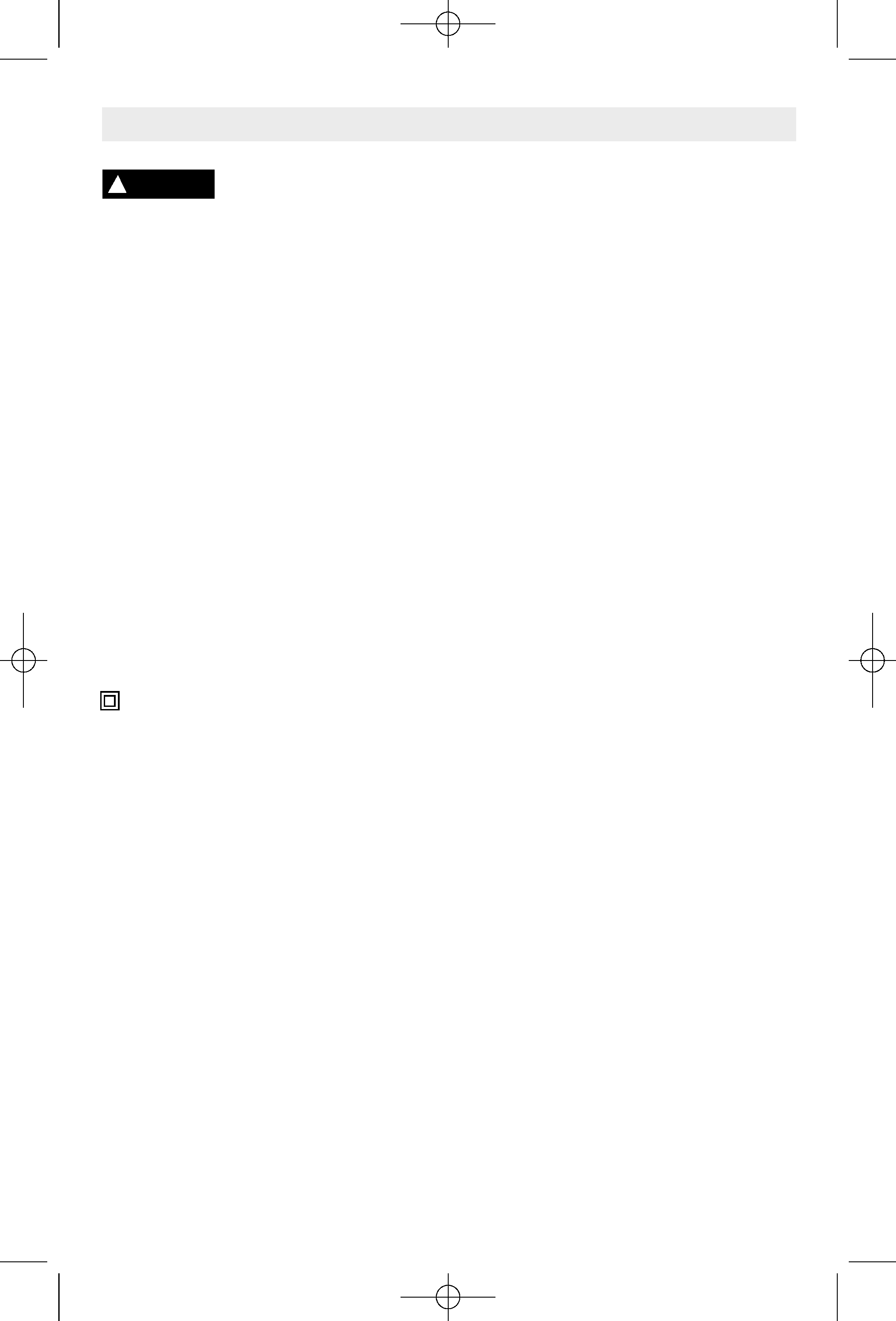
-2-
Read and understand all instructions. Failure to follow all instructions listed
below, may result in electric shock, fire and/or serious personal injury.
SAVE THESE INSTRUCTIONS
Work Area
Keep your work area clean and well lit.
Cluttered benches and dark areas invite
accidents.
Do not operate power tools in explosive
atmospheres, such as in the presence of
flammable liquids, gases, or dust. Power
tools create sparks which may ignite the dust
or fumes.
Keep by-standers, children, and visitors
away while operating a power tool.
Distractions can cause you to lose control.
Electrical Safety
Double Insulated tools are equipped with a
polarized plug (one blade is wider than the
other.) This plug will fit in a polarized outlet
only one way. If the plug does not fit fully
in the outlet, reverse the plug. If it still does
not fit, contact a qualified electrician to
install a polarized outlet. Do not change
the plug in any way. Double Insulation
eliminates the need for the three wire
grounded power cord and grounded power
supply system.
Before plugging in the tool, be
certain the outlet voltage supplied is within the
voltage marked on the nameplate. Do not use
"AC only" rated tools with a DC power supply.
Avoid body contact with grounded
surfaces such as pipes, radiators, ranges
and refrigerators. There is an increased risk
of electric shock if your body is grounded. If
operating the power tool in damp locations is
unavoidable, a Ground Fault Circuit Interrupter
must be used to supply the power to your tool.
Electrician's rubber gloves and footwear will
further enhance your personal safety.
Don't expose power tools to rain or wet
conditions. Water entering a power tool will
increase the risk of electric shock.
Do not abuse the cord. Never use the cord
to carry the tools or pull the plug from an
outlet. Keep cord away from heat, oil, sharp
edges or moving parts. Replace damaged
cords immediately. Damaged cords increase
the risk of electric shock.
When operating a power tool outside, use
an outdoor extension cord marked "W-A"
or "W." These cords are rated for outdoor use
and reduce the risk of electric shock. Refer to
"Recommended sizes of Extension Cords" in
the Accessory section of this manual.
Personal Safety
Stay alert, watch what you are doing and
use common sense when operating a
power tool. Do not use tool while tired or
under the influence of drugs, alcohol, or
medication. A moment of inattention while
operating power tools may result in serious
personal injury.
Dress properly. Do not wear loose clothing
or jewelry. Contain long hair. Keep your
hair, clothing, and gloves away from
moving parts. Loose clothes, jewelry, or
long hair can be caught in moving parts.
Keep handles dry, clean and free from oil and
grease.
Avoid accidental starting. Be sure switch is
"OFF" before plugging in. Carrying tools with
your finger on the switch or plugging in tools
that have the switch "ON" invites accidents.
Remove adjusting keys or wrenches before
turning the tool "ON". A wrench or a key that
is left attached to a rotating part of the tool may
result in personal injury.
Do not overreach. Keep proper footing and
balance at all times. Proper footing and
balance enables better control of the tool in
unexpected situations.
Use safety equipment. Always wear eye
protection. Dust mask, non-skid safety shoes,
hard hat, or hearing protection must be used
for appropriate conditions.
Tool Use and Care
Use clamps or other practical way to
secure and support the workpiece to a
stable platform. Holding the work by hand or
against your body is unstable and may lead to
loss of control.
! WARNING
Power Tool Safety Rules
BM 1619X00905 3-05
3/24/05
11:00 PM
Page 2
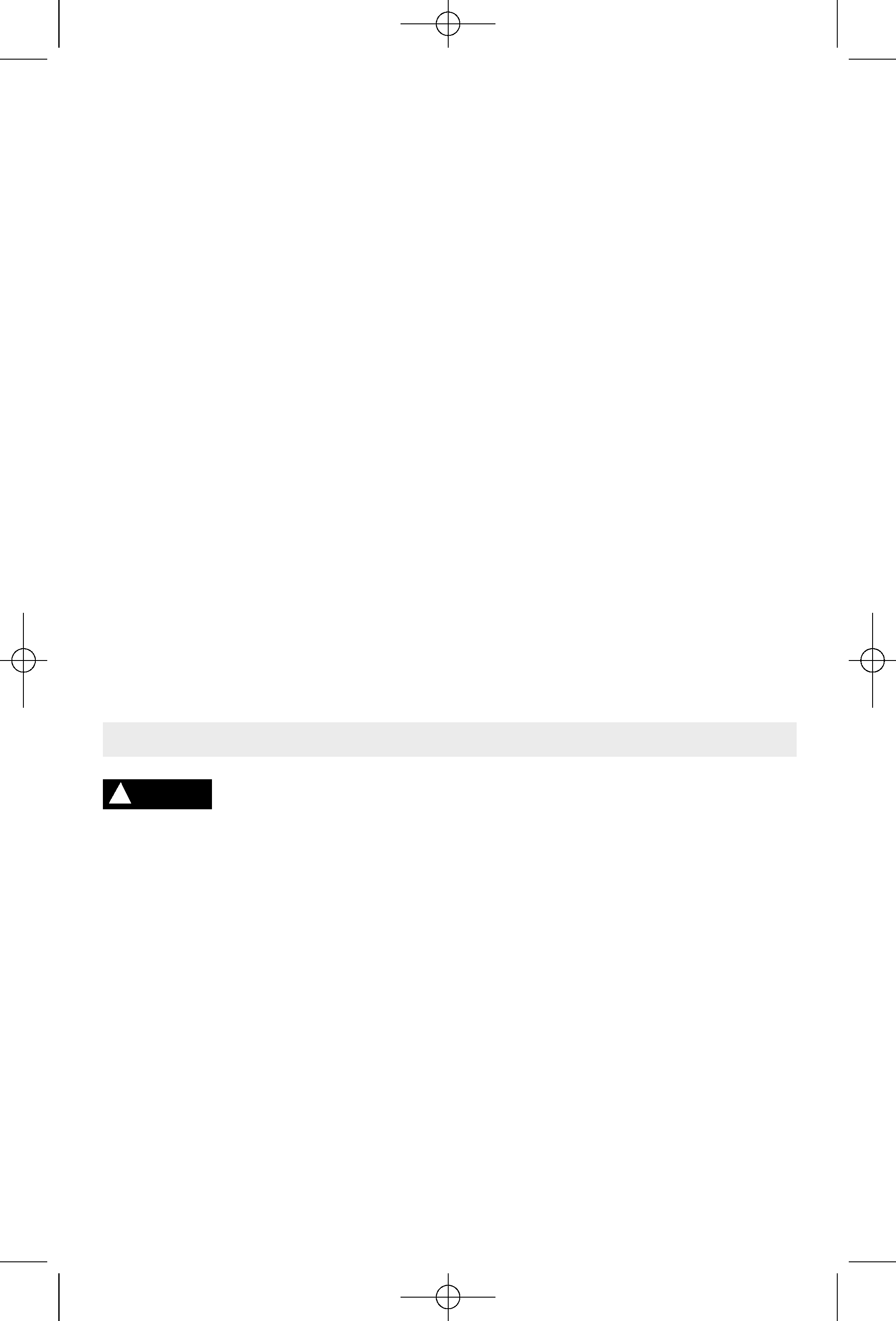
-3-
Safety Rules for Circular Saws
Do not force tool. Use the correct tool for
your application. The correct tool will do the
job better and safer at the rate for which it is
designed.
Do not use tool if switch does not turn it
"ON" or "OFF". Any tool that cannot be
controlled with the switch is dangerous and
must be repaired.
Disconnect the plug from the power source
before making any adjustments, changing
accessories, or storing the tool. Such
preventive safety measures reduce the risk of
starting the tool accidentally.
Store idle tools out of reach of children and
other untrained persons. Tools are
dangerous in the hands of untrained users.
Maintain tools with care. Keep cutting tools
sharp and clean. Properly maintained tools,
with sharp cutting edges are less likely to bind
and are easier to control. Any alteration or
modification is a misuse and may result in a
dangerous condition.
Check for misalignment or binding of
moving parts, breakage of parts, and any
other condition that may affect the tools
operation. If damaged, have the tool
serviced before using. Many accidents are
caused by poorly maintained tools. Develop a
periodic maintenance schedule for your tool.
Use only accessories that are recom-
mended by the manufacturer for your
model. Accessories that may be suitable for
one tool, may become hazardous when used
on another tool.
Service
Tool service must be performed only by
qualified repair personnel. Service or
maintenance performed by unqualified
personnel could result in a risk of injury. For
example: internal wires may be misplaced or
pinched, safety guard return springs may be
improperly mounted.
When servicing a tool, use only identical
replacement parts. Follow instructions in
the Maintenance section of this manual.
Use of unauthorized parts or failure to follow
Maintenance Instructions may create a risk of
electric shock or injury. Certain cleaning
agents such as gasoline, carbon tetrachloride,
ammonia, etc. may damage plastic parts.
Keep hands away from
cutting area and blade. Keep
your second hand on auxiliary handle, or
motor housing. If both hands are holding the
saw, they cannot be cut by the blade.
Hold the
saw firmly to prevent loss of control. Figures in
this manual illustrate typical hand support of the
saw. NEVER place your hand behind the saw
blade since kickback could cause the saw to
jump backwards over your hand.
Keep your body positioned to either side of
the saw blade, but not in line with the saw
blade. KICKBACK could cause the saw to jump
backwards. (See "Causes and Operator
Prevention of Kickback.")
Do not reach underneath the work. The
guard cannot protect you from the blade below
the work.
Do not attempt to remove cut material
when blade is moving.
Check lower guard for proper closing before
each use. Do not operate saw if lower guard
does not move freely and close instantly.
Never clamp or tie the lower guard into the
open position. If saw is accidentally dropped,
lower guard may be bent. Raise the lower guard
only with the Retracting Handle or Lower Guard
Lift Lever and make sure it moves freely and
does not touch the blade or any other part, in all
angles and depths of cut.
Check the operation of the lower guard
spring. If the guard and the spring are not
operating properly, they must be serviced
before use. Lower guard may operate
sluggishly due to damaged parts, gummy
deposits, or a buildup of debris.
Disconnect the
plug from power source. Periodically remove
the blade, clean the upper, lower guards and
the hub area with kerosene and wipe it dry, or
blow it clean with compressed air.
DANGER
!
BM 1619X00905 3-05
3/24/05
11:00 PM
Page 3
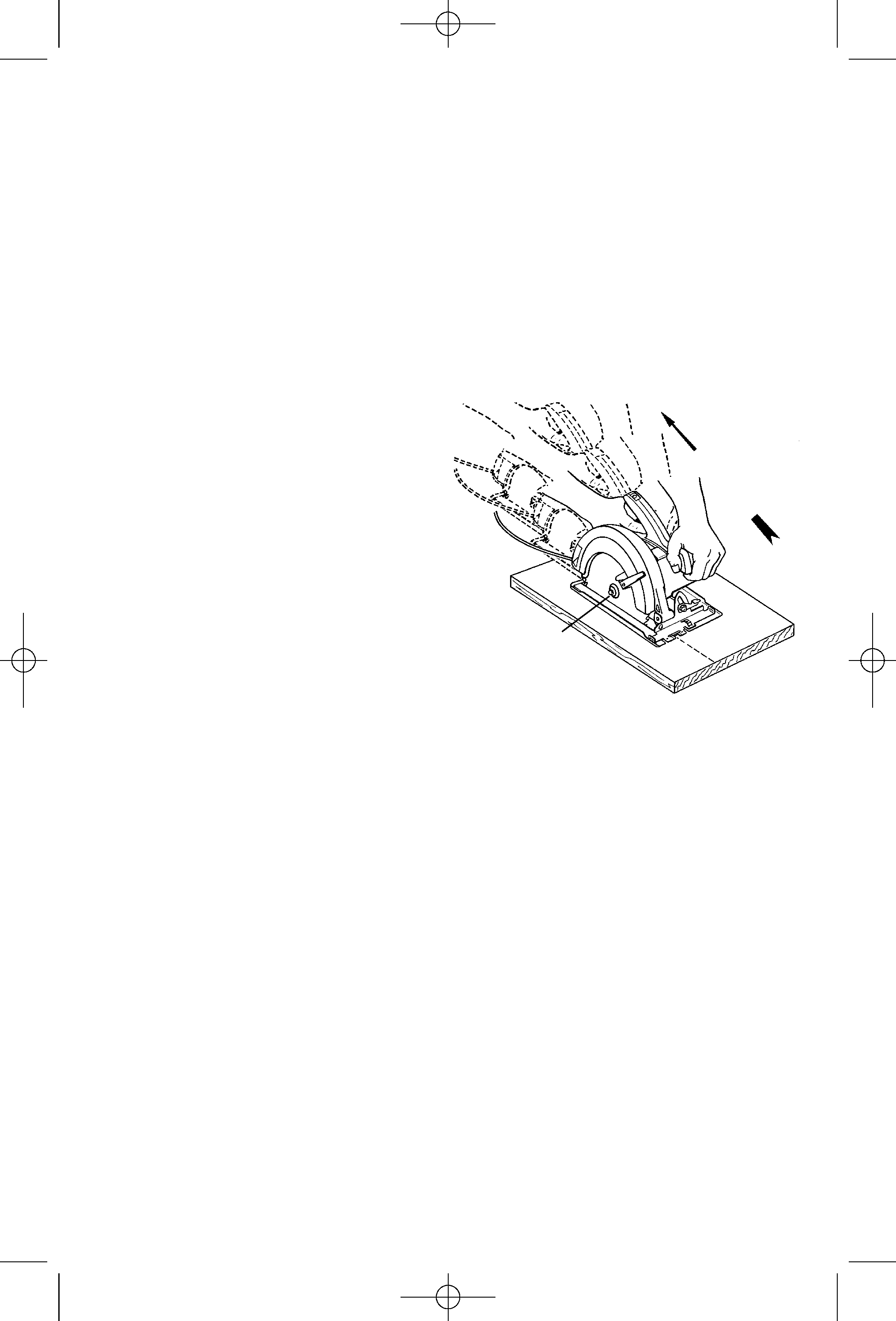
-4-
Lower guard should be retracted manually
only for special cuts such as "Pocket Cuts"
and "Compound Cuts". Raise lower guard
by Retracting Handle or Lower Guard Lift
Lever. As soon as blade enters the material,
lower guard must be released. For all other
sawing, the lower guard should operate
automatically.
Always observe that the lower guard is
covering the blade before placing saw down
on bench or floor. An unprotected, coasting
blade will cause the saw to walk backwards,
cutting whatever is in its path. Be aware of the
time it takes for the blade to stop after switch is
released.
NEVER hold piece being cut in your hands
or across your leg. It is important to support
the work properly to minimize body exposure,
blade binding, or loss of control.
Hold tool by the insulated gripping surfaces
when performing an operation where the
cutting tool may contact hidden wiring or it
own cord. Contact with a "live" wire will also
make exposed metal parts of the tool "live" and
shock the operator.
When ripping always use a rip fence or
straight edge guide. This improves accuracy
of cut and reduces the chance for blade binding.
Always use blades with correct size and
shape (diamond vs. round) arbor holes.
Blades that do not match the mounting
hardware of the saw will run eccentrically,
causing loss of control and will not allow proper
vari-torque engagement.
Never use damaged or incorrect blade
washers or bolts. The blade washers and bolt
were specially designed for your saw, for
optimum performance and safety of operation.
The blade washers and the bolt on your saw
have been designed to work as a "VARI-
TORQUE CLUTCH". Understand the operation
and settings of the VARI-TORQUE CLUTCH,
because the proper setting of the CLUTCH,
combined with firm handling of the saw will
allow you to control KICKBACK.
Do not run the saw while carrying it at your
side. Lower guard may be opened by a
contact with your clothing. Accidental contact
with the spinning saw blade could result in
serious personal injury.
Depending upon use, the switch may not
last the life of the saw. If the switch should
fail in the "OFF" position, the saw may not
start. If it should fail while the saw is
running, the saw may not shut off. If either
occurs, unplug the saw immediately and do not
use until repaired.
This circular saw should not be mounted to
a table and converted to a table saw. Circular
saws are not designed or intended to be used
as table saws.
CAUSES AND OPERATOR PREVENTION
OF KICKBACK:
Kickback is a sudden reaction to a pinched,
bound or misaligned saw blade, causing an
uncontrolled saw to lift up and out of the
workpiece toward the operator.
When the blade is pinched or bound tightly by
the kerf closing down, the blade stalls and the
motor reaction drives the unit rapidly back
toward the operator.
If the blade becomes twisted or misaligned in
the cut, the teeth at the back edge of the blade
can dig into the top surface of the wood causing
the blade to climb out of the kerf and jump back
toward the operator.
Kickback is the result of tool misuse and/or
incorrect operating procedures or conditions
and can be avoided by taking proper
precautions as given below:
Maintain a firm grip with both hands on the
saw and position your body and arm to
allow you to resist KICKBACK forces.
KICKBACK forces can be controlled by the
operator, if proper precautions are taken.
When blade is binding, or when interrupting
a cut for any reason, release the trigger and
hold the saw motionless in the material until
the blade comes to a complete stop. Never
VARI-TORQUE
CLUTCH
K
IC
K
B
A
C
K
BM 1619X00905 3-05
3/24/05
11:00 PM
Page 4
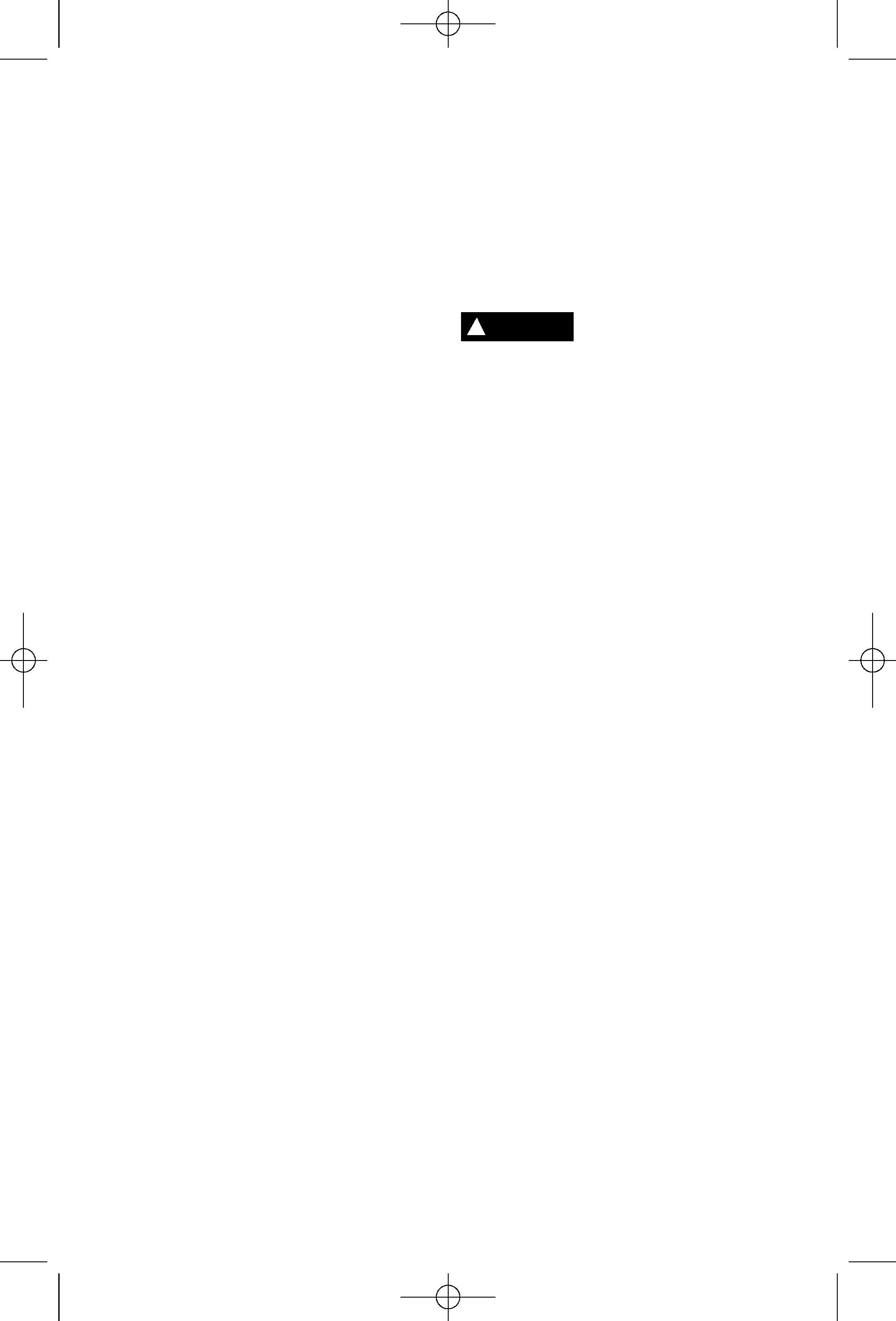
attempt to remove the saw from the work or
pull the saw backward while the blade is in
motion or KICKBACK may occur. Investigate
and take corrective action to eliminate the cause
of blade binding.
Wet lumber, green lumber or
pressure treated lumber require special
attention during cutting operation to prevent
KICKBACK. Avoid cutting nails. Inspect for and
remove all nails from lumber before cutting.
When restarting a saw in a workpiece,
center the saw blade in the kerf and check
that saw teeth are not engaged into the
material. If saw blade is binding, it may walk up
or KICKBACK from the workpiece as the saw is
restarted.
Support large panels to minimize the risk of
blade pinching and KICKBACK. Large panels
tend to sag under their own weight. Supports
must be placed under the panel on both sides,
near the line of cut and near the edge of the
panel.
See "Cutting Large Sheets" in this
manual.
Do not use dull or damaged blade.
Unsharpened or improperly set blades produce
narrow kerf causing excessive friction, blade
binding and KICKBACK.
Blade depth and bevel adjusting locking
knobs must be tight and secure before
making cut. If blade adjustment shifts while
cutting, it may cause binding and KICKBACK.
Using the saw with an excessive depth of cut
setting increases loading on the unit and
susceptibility to twisting of the blade in the kerf.
It also increases the surface area of the blade
available for pinching under conditions of kerf
close down.
Use extra caution when making a "Pocket
Cut" into existing walls or other blind areas.
The protruding blade may cut objects that can
cause KICKBACK.
Some dust created by
power sanding, sawing,
grinding, drilling, and other construction
activities contains chemicals known to
cause cancer, birth defects or other
reproductive harm. Some examples of
these chemicals are:
· Lead from lead-based paints,
· Crystalline silica from bricks and cement
and other masonry products, and
· Arsenic and chromium from chemically-
treated lumber.
Your risk from these exposures varies,
depending on how often you do this type of
work. To reduce your exposure to these
chemicals: work in a well ventilated area, and
work with approved safety equipment, such
as those dust masks that are specially
designed to filter out microscopic particles.
-5-
! WARNING
BM 1619X00905 3-05
3/24/05
11:00 PM
Page 5
